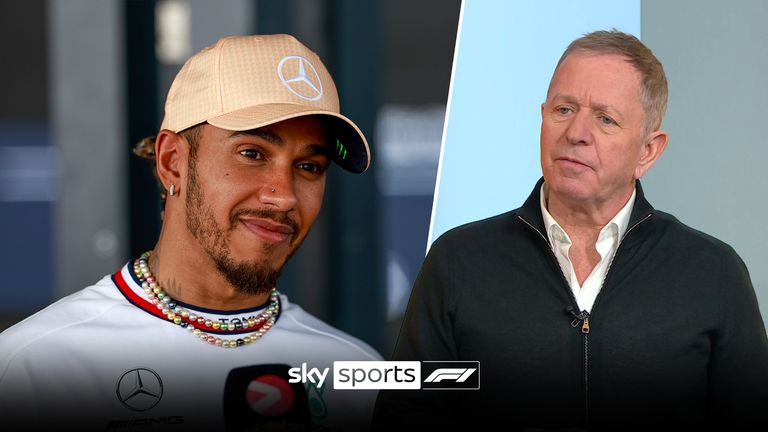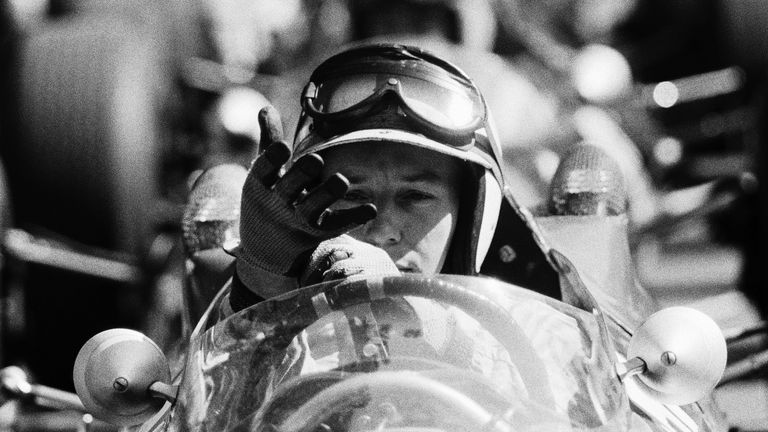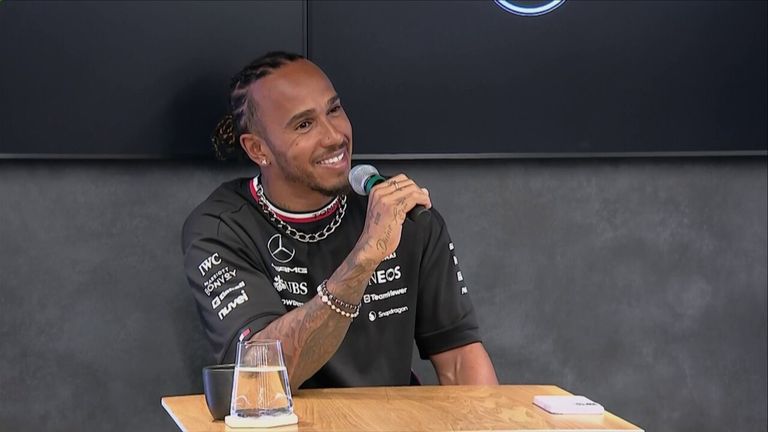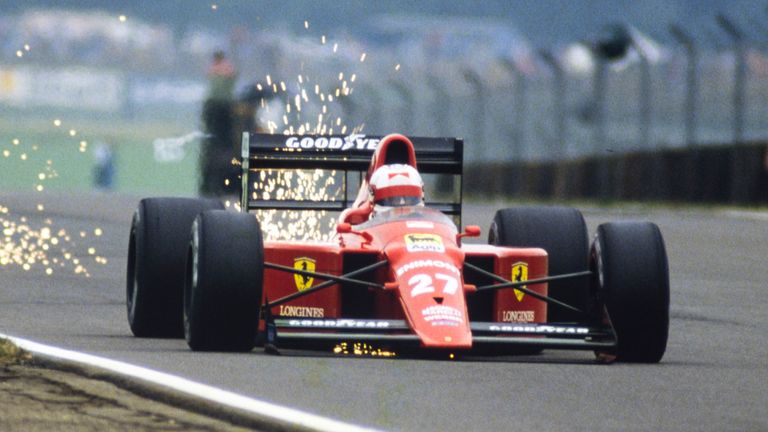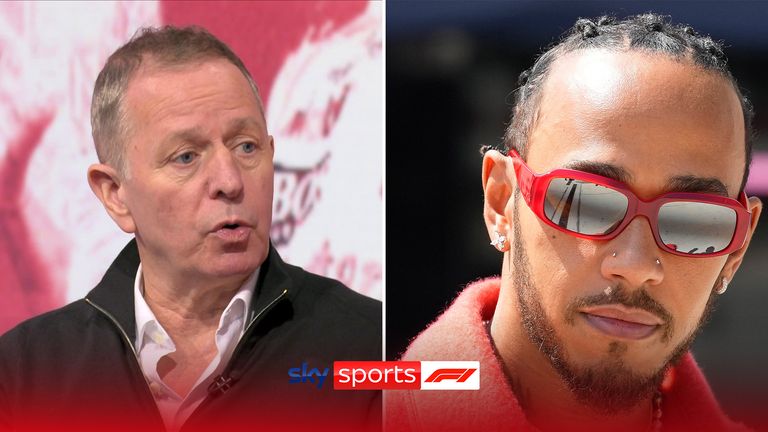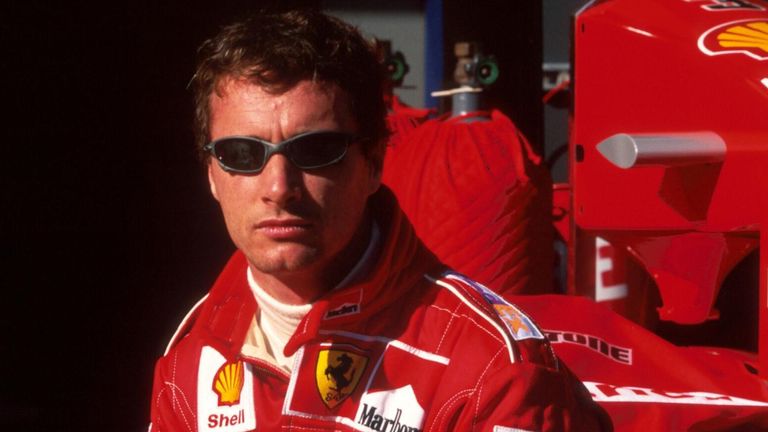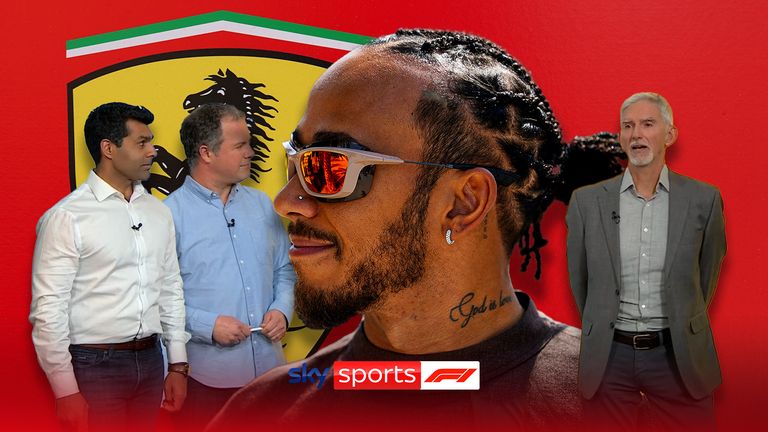[ad_1]
When Lewis Hamilton moves to Ferrari in 2025, he will become the 12th British driver to have raced for the iconic Italian marque in Formula 1.
The lure of the Prancing Horse is one which drivers of any nationality have found tough to ignore, not just because of the team’s history in the sport which stretches all the way back to the very first season of the world championship in 1950.
Fame, fortune, and the adulation of the Tifosi waits for any driver who can scale the top of the mountain driving those famous red cars – a challenge which many have attempted but only the very best have succeeded in.
Several British drivers are among those who have written their names in the history books with Ferrari, and we take a look at some of his compatriots seven-time world champion Hamilton will be aiming to emulate when he arrives at Maranello…
Hawthorn and Collins: Triumph and tragedy
Although Peter Whitehead raced for Ferrari in 1950, the story of the Brits at Ferrari in F1 really begins with Mike Hawthorn and Peter Collins – the team-mates who become close friends but whose stories both had tragic endings.
Hawthorn, something of a larger-than-life character who would wear a bow tie while racing, initially drove for Ferrari from 1953 to 1955 – save for two races for Vanwall at the start of the last of those seasons – when he scored two Grand Prix wins and three other podium finishes.
He returned in 1957 after an unsuccessful season away and immediately struck up a friendship with Collins, brought in the previous year, to the extent that the pair agreed to split all prizemoney equally. Hawthorn would also later threaten to quit Ferrari if the team fired his compatriot following an incident at the 1958 Le Mans 24 Hours.
Had it not been for selflessly handing over his car to team leader Juan Manual Fangio at the 1956 Italian Grand Prix, Collins would have likely become Britain’s first F1 world champion. However, his career was tragically cut short at the age of 26, dying following an accident at the 1958 German Grand Prix.
Hawthorn would instead go on to become the first British F1 drivers’ champion that season and, at the time, the sport’s youngest world champion, but retired immediately still reeling from the death of his friend. Sadly, he too would be killed in a road accident in January the following year.
Brooks’ season in the sun
Tony Brooks had just one season racing for Ferrari, but it was a year which saw him come closer to winning the world championship than at any other point during his Formula 1 career.
Nicknamed ‘The Racing Dentist’ due to having combined the early stages of his career with studying to follow his father into dentistry, Brooks joined the Italian team for the 1959 season after Vanwall, where he had scored four Grand Prix wins, withdrew as a full-time F1 entrant.
A second place at the season-opening Monaco Grand Prix was followed by victories in France and Germany, plus a third in the United States Grand Prix. But retirements in the Netherlands, Italy and Britain – the latter driving in a Vanwall after strikes trapped Ferrari in Italy – and a ninth place in Germany proved costly.
Brooks would eventually finish the season second and four points behind eventual champion Jack Brabham but would never come close to winning the drivers’ title again and retired after a disappointing 1961 campaign.
Along with his former Vanwall team-mate Stirling Moss, he is regarded as one of the best drivers never to win the world championship.
Surtees: An icon on two and four wheels
John Surtees was already a multiple Grand Prix motorcycle champion when he began his Formula 1 career in 1960, and to this day remains the only person to have won the world title in the premier classes on two wheels and four.
Given his successes on bikes came with the Italian MV Augusta marque, it was perhaps inevitable he would end up driving for Ferrari in F1 and he made the move to the team for the 1963 season after some impressive showings for ex-driver Reg Parnell’s privateer team in the previous two years.
That first year yielded a sole Grand Prix win and two further podiums, but a strong second half to the 1964 season which included victories in Germany and Ferrari’s home race at Monza saw Surtees arrive at the final race of the season in a three-way fight for the title.
All sorts of permutations could have led to either Surtees, reigning champion Jim Clark or Graham Hill being crowned champion at Autodromo Hermanos Rodriguez, but a second-place finish for the Ferrari driver with an oil-line failure seeing Clark come fifth and exhaust problems causing Hill to finish two laps down and out of the points saw him snatch the title.
He would never enjoy that level of success again though and quit Ferrari early in the 1966 season after his relationship with the team had soured, joining Cooper then Honda and BRM followed by founding his own team and eventually retiring from racing in 1972.
Mansell: ‘Il Leone’
Nigel Mansell had the honour of being the last driver to be hand-picked by Enzo Ferrari to race for the team prior to the long-time owner’s death in 1988, but his two seasons with the Maranello squad were a mix of highs and lows.
He immediately endeared himself to the Tifosi by becoming the first Ferrari driver to win on his debut since Mario Andretti 18 years earlier with his triumph in the 1989 Brazilian Grand Prix and earned the nickname ‘Il Leone’ – The Lion – thanks to his fearless approach to racing.
Another victory in Hungary and four other podium places helped secure a fourth-place finish in the drivers’ championship, but reliability issues due to the new semi-automatic gearbox and disqualifications in Canada and Portugal, the latter of which led to a ban from the Spanish Grand Prix, marred the season.
Mansell’s second year saw him clash with new team-mate and triple world champion Alain Prost, and in one notorious incident at that year’s British Grand Prix found out the mechanics had swapped their cars without his knowledge after Prost felt he had the inferior machine of the two.
A race win in Portugal and four other podium finishes did little to quell Mansell’s frustrations and he announced his intention to retire at the end of the year. That did not last long, however, and he swiftly rejoined Williams where he was crowned world champion in 1992.
Fast Eddie: Irvine’s crucial role
Eddie Irvine attracted plenty of attention for his on and off-track antics, but that often overshadowed the mercurial Northern Irishman’s driving ability, and he played a vital support role to Michael Schumacher during their four seasons together at Ferrari.
Having been bought out of his Jordan contract in 1995, his first race for the team the following year in Australia yielded a first F1 podium finish, but the rest of the year proved less fruitful. Five more podiums followed in 1997 and he was a regular top-three finisher in 1998 as he finished fourth in the championship.
The 1999 campaign saw Irvine duking it out for top honours though. Having claimed his first Grand Prix win at the season-opener in Melbourne, Irvine found himself leading Ferrari’s title charge after Schumacher broke his leg in an opening-lap accident at Silverstone.
Back-to-back wins in Austria and Germany vaulted him to the top of the drivers’ standings by the start of August, yet he would be denied in the final race of the year in Japan where a third-place finish saw him end the season two points behind champion Mika Hakkinen.
Seeking a No 1 driver role, Irvine departed Ferrari for an ill-fated three years with Jaguar and called time on his F1 career at the end of the 2002 season. Prior to Hamilton’s signing, he was the last Briton to race for Ferrari.
24 races in 2024! Watch every round of next season live on Sky Sports F1, starting with the Bahrain Grand Prix from February 29-March 2. Stream every F1 race and more with a NOW Sports Month Membership
Get Sky Sports on WhatsApp!
You can now start receiving messages and alerts for the latest breaking sports news, analysis, in-depth features and videos from our dedicated WhatsApp channel!
Find out more here…
[ad_2]
Source link



